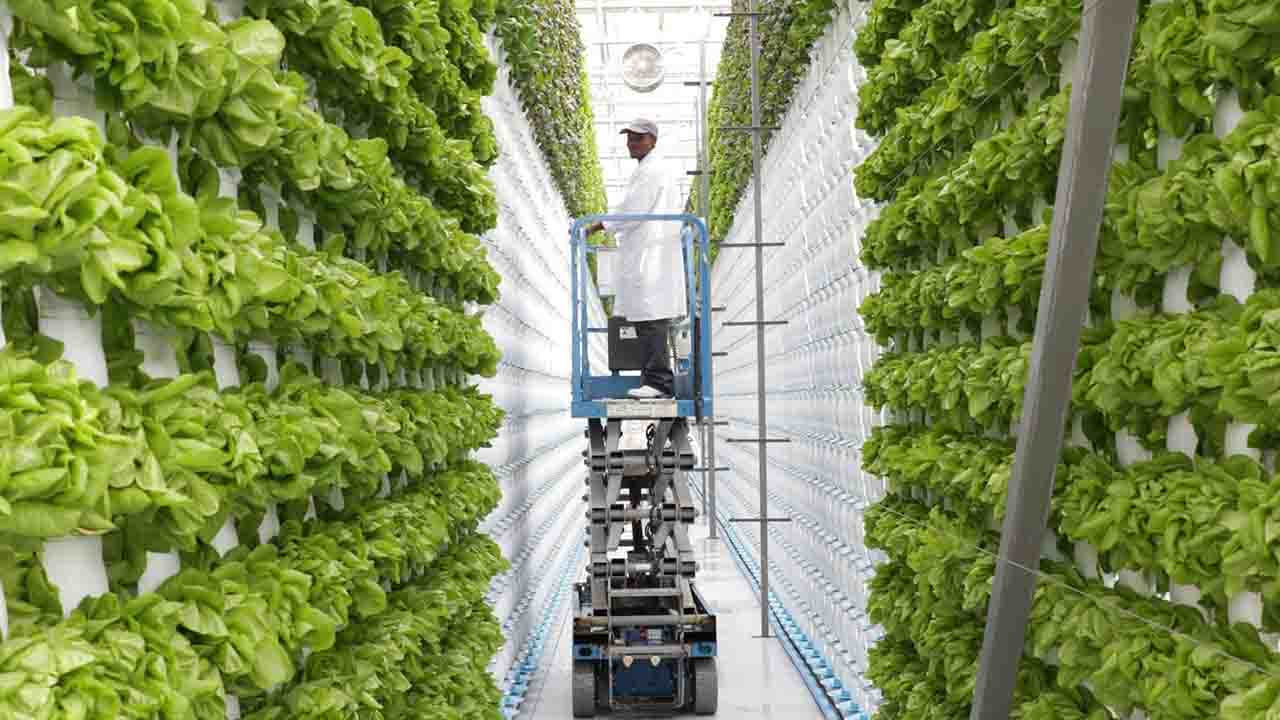The world’s population is expected to reach 9.7 billion by 2050, and with it, the demand for food will increase. Traditional farming methods are not sustainable enough to meet this demand, and as a result, we are facing a global food crisis.
Vertical farming is a new agricultural technique that could help to solve this crisis. Vertical farms are indoor, multi-story structures that use hydroponics or aquaponics to grow crops. Hydroponics is a method of growing plants without soil, using a nutrient-rich water solution. Aquaponics is a combination of hydroponics and aquaculture, which is the raising of fish in tanks.
Vertical farms have several advantages over traditional farming methods. They can be located in urban areas, close to where food is needed. This reduces the need for transportation, which saves energy and reduces pollution. Vertical farms can also be built year-round, regardless of the weather. This means that they can produce food even during times of drought or flood.
Vertical farms can also produce more food with less land. A study by researchers at the University of Florida found that vertical farms could produce up to 600 times more wheat than traditional farming methods. This is because vertical farms can use vertical space, which is not available in traditional farms.
Vertical farming is still a relatively new technology, but it has the potential to revolutionize the way we produce food. If vertical farms are widely adopted, they could help to solve the world’s food crisis and make food more available and affordable for everyone.
Benefits of Vertical Farming
In addition to the advantages mentioned above, vertical farming also has a number of other benefits, including:
Increased food security: Vertical farms can be located in urban areas, close to where food is needed. This reduces the risk of food shortages in the event of a natural disaster or other disruption to the food supply chain.
Reduced environmental impact: Vertical farms use less land and water than traditional farms. They also produce less waste, as they do not require the use of pesticides or herbicides.
Increased employment: Vertical farms create jobs in urban areas, where there is a high demand for food.
Improved food quality: Vertical farms can produce food year-round, regardless of the weather. This means that the food is fresher and has a longer shelf life.
Challenges of Vertical Farming
While vertical farming has many potential benefits, there are also some challenges that need to be addressed. These challenges include:
High initial cost: Vertical farms are more expensive to build than traditional farms.
Energy requirements: Vertical farms require a lot of energy to power the lights and ventilation systems.
Water requirements: Vertical farms require a lot of water to grow crops.
Pest and disease control: Vertical farms are more susceptible to pests and diseases than traditional farms.
Vertical farming is a promising new technology that has the potential to revolutionize the way we produce food. However, there are still some challenges that need to be addressed before vertical farming can become a mainstream agricultural practice. With continued research and development, vertical farming could play a major role in feeding the world’s growing population.








